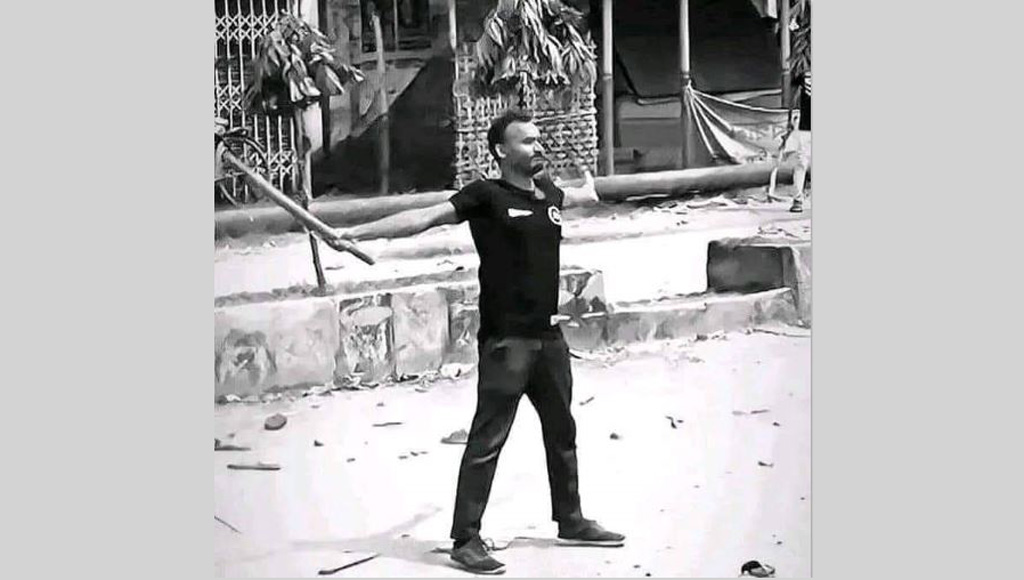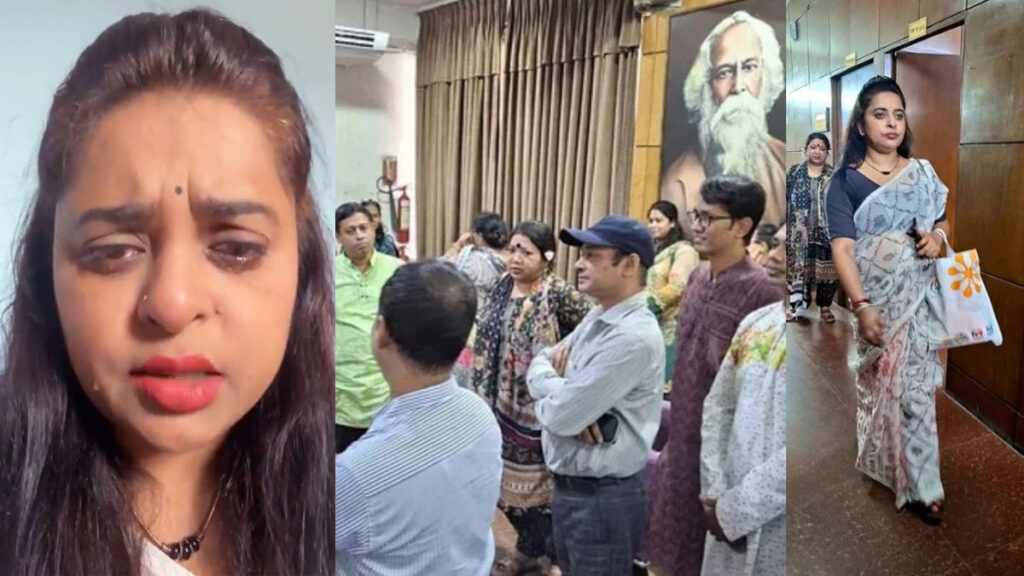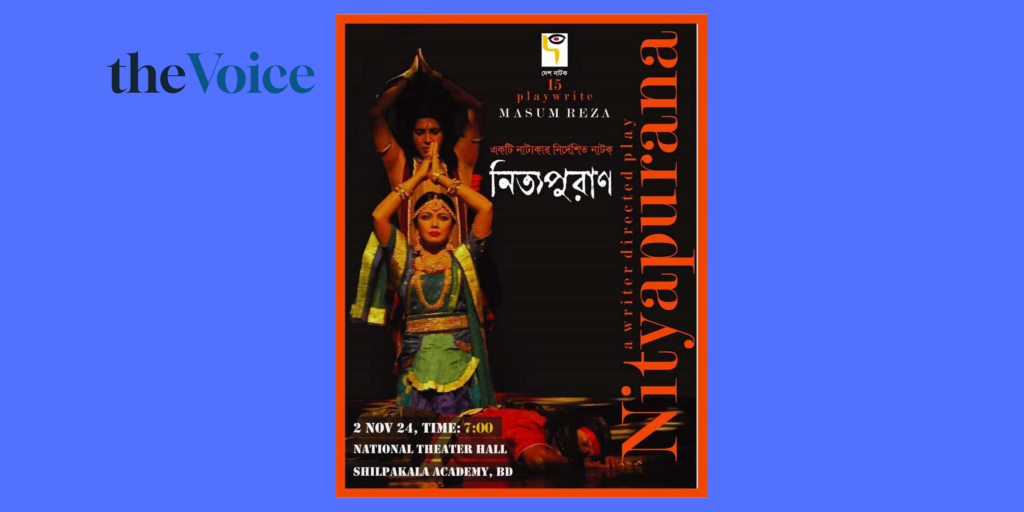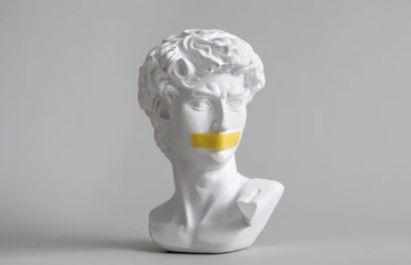Sharmin Jahan
Artists serve as society’s moral compass, expected not only to create but to critique, question, and push boundaries. Art has long stood as a beacon of truth, a force capable of capturing the struggles, hopes, and unspoken stories of the marginalized. When artists fall silent or choose convenience over conviction, it signals a dangerous departure from these foundational values. Unfortunately, in recent events across Bangladesh, we see a disturbing trend where artists, rather than amplifying the voices of justice, seem more aligned with self-preservation.
In many historical contexts, artists have risked their lives to oppose oppressive regimes and advocate for societal change. From the renaissance painters of Italy who challenged religious orthodoxy to the Harlem Renaissance in the U.S., which gave voice to African American struggles, artists have historically shaped social discourse. Art’s purpose is far greater than entertainment; it is an unrelenting search for truth and an instrument for justice. When this purpose is compromised by fear, art loses its moral core and becomes complicit in the silencing of voices it was meant to amplify.
The Incident of Abu Sayeed: Silence as Betrayal

When Abu Sayeed, a young voice in Bangladesh, met his tragic end, the reaction of the artist community was swift—initially. Groups of artists organized a symbolic protest, donning black shirts with the slogan “I Am Sayeed,” a gesture that seemed to promise solidarity and action. However, as details emerged suggesting a complex situation, these voices evaporated. This abrupt silence feels like an act of betrayal, reducing their initial show of solidarity to a mere performance.
This retreat reveals a reluctance among artists to engage deeply with uncomfortable truths. Rather than grappling with the complex reality of Sayeed’s situation, the artists chose silence, seemingly preferring to distance themselves from potential controversy. Silence in this context speaks volumes; it suggests that, when faced with challenging truths, many artists may prefer disengagement over difficult conversations. This behavior betrays their role as truth-tellers and moral guides, a retreat from the very responsibilities they initially embraced with slogans and symbolism.
The Case of Jyotika Jyoti: Artists’ Responsibilities in the Face of Harassment

When actress Jyotika Jyoti faced a mob organized to pressure her into leaving a significant project, the artist community watched in silence. This event, marked by a blatant disregard for artistic freedom and personal agency, demanded an outcry from those who value creative expression. Yet, silence prevailed, with artists unwilling to stand by a peer in a moment of vulnerability.
Historically, art communities have rallied together in times of crisis, viewing an attack on one artist as an affront to the entire community. Here, however, we see the disturbing ease with which artists have abandoned this unity, instead opting for self-protection. This hesitance reflects a troubling shift, where personal safety and career security have taken precedence over collective rights. By not standing with Jyoti, the artistic community sent a message that harassment and intimidation can indeed drive a wedge between artists, isolating individuals in their time of need. This silence serves as an implicit endorsement of these tactics, weakening the solidarity essential for true artistic freedom.
The Role of Jamil Ahmed: Compromise or Capitulation?

Jamil Ahmed’s role as the Director General of Bangladesh Shilpakala Academy has come under scrutiny following his apparent capitulation to extremist demands. Ahmed, who once held a reputation as a champion for progressive art, has, in recent incidents, taken actions that suggest a troubling readiness to yield to pressure. Most notably, in the face of extremist demands to cancel a theatrical performance due to a Facebook post deemed controversial, Ahmed chose compliance over resilience, effectively silencing the play and yielding to calls for censorship.
This episode is reminiscent of a previous incident where Hindu activist Utsob Mondal faced mob justice after being forcibly removed from police protection. The language used by the extremists—”Hand him over to us”—echoes the chilling undertones of vigilante justice. In a country where such incidents have led to tragic outcomes, Ahmed’s decision to comply with similar demands reflects a fear-driven or, perhaps, opportunistic approach to leadership. Such actions raise serious questions about his commitment to defending artistic expression and his ability to protect Bangladesh’s cultural institutions from extremist influences.
Ahmed’s actions prompt a pressing question: Can the nation’s art institutions be entrusted to individuals who, rather than defending creative expression, seem willing to bend to even the faintest threats? If he truly values artistic integrity, Ahmed would acknowledge his limitations and consider stepping down, allowing someone with the courage to uphold these ideals to take his place.
Silence and Subservience: A Dangerous Path for Bangladesh’s Art Community

Art does not exist in isolation; it thrives within a society where it must continuously negotiate its space, relevance, and moral authority. In Bangladesh, a lack of opposition from the artist community in response to repression and censorship is both concerning and disheartening. Artists, by their very nature, are expected to challenge societal norms and power structures, offering alternative perspectives that can inspire change. Silence, in this context, becomes a form of complicity, a tacit approval of the very structures that seek to stifle dissent.
The artistic community’s recent behavior demonstrates an unsettling willingness to follow orders, even if those orders contravene their principles and responsibilities. This subservience is counter to the essence of artistry, which has, throughout history, thrived on rebellion, defiance, and a commitment to higher ideals. Artists are custodians of truth, tasked with the responsibility to protect and promote justice, no matter the cost. Abandoning this duty in favor of personal or professional security is an act of betrayal, not only to the principles of art but to society as a whole.
Artistic Integrity: The Path Forward
The events in Bangladesh serve as a reminder that artistic integrity cannot be compromised without severe consequences. To move forward, artists must reaffirm their commitment to truth and justice, prioritizing their responsibilities over personal convenience. It is only by embracing these ideals that the art community can remain relevant, powerful, and true to its purpose.
Artists have the potential to spark social movements, bring hidden injustices to light, and encourage empathy across divides. But to do so, they must be willing to stand firm, even in the face of intimidation. Silence, subservience, and complicity will only serve to erode the foundations of art, leaving a legacy of lost voices and missed opportunities.
True change will only come when the artistic community rediscovers its courage and commitment to truth. For Bangladesh’s artists, the path forward requires a return to the principles that make art powerful—a relentless pursuit of justice, an unwavering dedication to truth, and a refusal to bow to the forces that seek to silence them.
